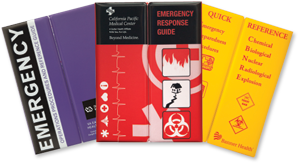Written by: Mark J. Berger – August 10, 2022
It’s been a little over two months since the tragedy in Uvalde.
I’m going to focus on my area of specialized knowledge and not comment on issues outside of this narrow scope.
I’m a veteran with more than 40 years in the lock industry. As a professional, the objective of my earliest locking adventures for schools were to prevent the theft of desktop computers from classrooms, protect school building perimeters, and prevent child abductions by restricting access to nursery schools. Yes – a properly applied lock, even one without electronic connection, can do that.
Times have changed. I look at school buildings differently now, both as a father and as a lock manufacturer. Combatting today’s security and life-safety challenges mean that school and campus facilities must be examined and evaluated even more closely. The Robb Elementary School tragedy highlights this in very stark terms.
When there is so much commentary flying around, when legislatures are moving faster than common sense, and when manufacturers of harmful, less-effective solutions are lobbying for federal dollars, I think it’s important to take a step back and review some of the agreed-upon leading practices and solutions for protecting students and teachers while at school.
Perimeter Locking
We have evolved into a society where we no longer accept that everyone can freely enter spaces. We limited our access to airports in response to hijackings and other terrorist events. Entering a ballpark or Broadway theater now involves magnetometers and bag checks. These are locations where security officers are deployed at the primary entrances, while reliable, code-compliant locking is in place on secondary entrances and exits.
Securing the perimeter of a school is no different. During high traffic periods (start and end of day), administrators or teachers should be present at each entry/exit door for students. Where security officers or resource officers are not present during the school day, there should be an intercom and electric door release system for visitors. We always recommend an interior vestibule as a second point to delay direct entry into the school once someone passes the street door.
Other perimeter doors, whether they are emergency exits, parking lot access doors, playground access doors or classroom access doors, need to be secured at all times. This is one of the most difficult rules to maintain. After all, there are periods when children are continuously going through these doors. It is not uncommon to see these doors propped open with a little cord around the handle, a wedge at the bottom of the door or something as simple as a pebble to allow free return into the building.
Convenience is always the enemy of security protocols. Habits are the hardest thing to change. I would hope schools recognize this risk factor and address it the following ways:
- Regularly check the performance of the door closer and the self-locking hardware at these doors.
- Establish a policy of having the door attended to by a monitor during activity periods.
- Use simple technology, like keys, or more sophisticated access control (cards, fobs, phone apps) for doors used for frequent entry by staff.
- Install door monitoring software on each remote door, tied to a panel in the school office. A propped door should generate an alarm and be promptly corrected.
Classroom Locking
The highest rates of fatality often occur when students and teachers are in classrooms when an active assailant enters a school building. This was the case in Uvalde, Sandy Hook, and Virginia Tech .
Therefore, the ability to quickly secure classrooms is critical. Not send an alert, not fumble for keys, not contact the authorities. When a gunman enters a school, the first step to prevent tragedy is to lock the classroom door and shelter. There may not be time for any other action.
It took only 24 seconds from the time when the Uvalde shooter entered the school to when he entered the classroom. This is the starkest acknowledgment yet of how important it is to be able to instantly secure a classroom door. Imagine being a teacher, charged with the protection of a classroom of children, and only 24 seconds or less to do so. Putting a secured door between you and an assailant in that moment is the fastest and best solution to prevent assault and harm.
In the final report of the Sandy Hook Advisory Commission, it is stated there has never been a breach of a locked classroom door during an active shooter event. This emphasizes the importance of this basic rule.
The classroom lock MUST be capable of locking from the interior. This has been the primary guidance from the Department of Homeland Security for more than 20 years. Opening the classroom door exposes the teacher and students to potential harm and identifies an open door to an active assailant. Yet, many locks rely on keys for deploying latch locks and bolts from either side of the door.
Remember those 24 seconds we discussed earlier? To lock a door from the inside, one person – typically the teacher – possesses the key. So if they are present, they will have to locate the key, approach the door, lock it, and ensure it is locked. That is not as simple as it sounds, as we know that stressful situations complicate performing the simplest of tasks. Inserting the thin key into a lock and remembering which way to rotate it can waste precious seconds.
Knowing there is a gunman on the other side of the door with a room of terrified children behind you, who among us can say with full certainty that we would be able to locate a key and operate a lock in under 24 seconds? And there’s always the chance the teacher is not in the classroom, may have trouble finding or holding the key as panic begins, may not have the key on them, or know the protocol. The latter two points factored into the loss of life in the classroom with the greatest loss of life at Sandy Hook.
A far better option is utilizing locks that can be quickly operated by anyone in the classroom with a simple mechanism (rather than a key) to lock the door. Should the classroom-facing side of the lock have a red push button or turn piece, the student closest to the door would be able to lock the door in under a second. No special training is required, and most products have indicators so anyone in the room would know it is secured.
While concerns about students locking out teachers have been raised, this has not proven to be a problem in the thousands of installations of pushbutton locks on classroom doors. One of the reasons is the design of the pushbutton. It is recessed, so it cannot be pressed accidentally, like brushing by it. Should a student press the button mischievously, they would be inside the classroom when a school official or teacher enters the room by unlocking with a key, ready to visit the principal’s office.
Code-Compliant Locking
Code-compliant locking is also critical. Temporary blocking devices, which typically must be removed from the wall and then added to the door, can impede quick exiting. They can also be tricky to operate. If shots are heard in a classroom and teachers and students in a different part of the school are instructed to evacuate quickly, any impediment to getting through that door could be disastrous. Add-on devices also have issues with ADA compliance, which could jeopardize federal funding as they do not meet ADA regulations.
Such regulations are not merely red tape, intended to tie up good security solutions in paperwork. No. In fact, much of fire, life safety, and ADA compliance codes arose from senseless tragedies, with the hope that regulations would prevent loss of life in the future. And simply put, any security solution that leaves behind our most vulnerable children is unacceptable.
Electric Lockdown
School-wide locking systems, hardwired or wireless, provide the ability to instantly lockdown each classroom door. There are systems that allow the lockdown from a central point (school office) or from any location (lockdown station in a room, pendant, etc.). These comprehensive solutions require a full infrastructure, including cabling or wireless system equipment design and set-up.
Constantly Locked Doors vs. Quick Lockdown Locks
Historically, classroom doors have remained unlocked while class is in session. Teachers have generally preferred this operating scenario, as it removes their need to act as a door monitor, walking over and releasing the door to allow children to enter while class is in session. In fact, the operation that allows the door to be unlocked for free entry over extended periods is actually called the “classroom” function.
As school shootings proliferate, a common suggestion by the security and locking community is to convert the lock function from “classroom” to “storeroom” function, where the exterior is always locked. This eliminates the need to actively lock the door upon notification of a lockdown. It remains locked until it is proactively unlocked.
Unfortunately, we have seen many instances where teachers prop the doors open, whether to allow students to enter the classroom freely, improve ventilation, or another reason. As a result, not only is the security compromised, but lockdowns are more difficult to enact, as locking down the classroom now requires undoing whatever system the teacher enacted to hold the door open in the first place. This can typically be time consuming and can create confusion during a period where every second counts.
Classroom Drills
Just like the fire drills of bygone days, lockdown drills are intended to train students and teachers in the correct actions to take upon hearing the alarm. Realistically, schools may perform one or two drills per academic year. It is unrealistic to expect students to have these actions front-of-mind when they hear an alarm. They will naturally be frightened, and it is all we can hope for to just get them to move quickly to shelter in a safe space in the classroom.
This is why any lockdown solution must be intuitive, simple, and lacking any thought or sequence of actions. This is why push buttons and turn pieces with indicators are critical parts of a classroom lockdown solution.
The Right Door Locks Save Lives
Creating a safe space for students in the classroom is universally agreed-upon as a critical component in any school security plan. Ensuring that perimeter doors are functioning and restrict entry is another critical layer of defense. Sadly, many districts have not enacted these basic levels of protection for their faculty and students. If we have learned anything from Uvalde, Parkland, Newtown, and far too many other heartbreaking school shootings, it is that when seconds count, quickly locking classroom doors saves lives.
Mark J. Berger is president and chief product officer for Securitech Group Inc.
This article appeared on Campus Safety News and is shared with consent: https://www.campussafetymagazine.com/news/locking-lessons-learned-uvalde/#respond







